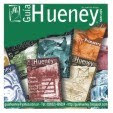Province located in central Argentina, with over 450,000 inhabitants, and an area of 76,748 km ². It was originally inhabited by various indigenous groups.
Founded on August 25th, 1594, as "San Luis de Loyola Nueva Medina de Río Seco", its geography is characterized by a mountainous landscape to the North, with varying heights (the Agua Hedionda hill is the highest in the province, with 2,150 meters), and a flat landscape, with many lakes, to the South.
San Luis has all climates, with an average annual temperature of 17 ° C, a winter mean temperature of 8 ° C, and 24 ° C in summer. Rains occur mainly in summer. In winter, precipitations are rare, but it may snow at any height, creating stunning landscapes.
The mountain is where many streams and rivers are born. More than 10 dams that supply water for irrigation and human consumption (San Felipe, Cruz de Piedra, La Florida, La Huertita, Potrero de los Funes, Paso de las Carretas Antonio Esteban Agüero, Nogolí, Luján, Villa General Roca) collect water from these streams and rivers.
The mountain is where many streams and rivers are born. More than 10 dams that supply water for irrigation and human consumption (San Felipe, Cruz de Piedra, La Florida, La Huertita, Potrero de los Funes, Paso de las Carretas Antonio Esteban Agüero, Nogolí, Luján, Villa General Roca) collect water from these streams and rivers.
San Luis native flora includes carob tree, white carob tree, Tintitaco, Caldén, Molle, Peje, Jarilla, Chana, Aromo or Espinillo, Brea, Cortadera and Retama. Several of them are endangered. Native fauna features pampas deer (endangered), Skunk, Herons, Male Red Brocket Deer (Mazama americana), Rhea, Creole Hare, Cougar, Fox, Rabbit, Mulitas, Peccary, Partridge, Biguá, Moorhen, Condor, Weasel, and colorful songbirds.
San Luis is a wonderful natural tourist center, which offers hot springs, salt marshes, abundant fisheries, minerals such as onyx marble, limestone, and slate. There are also cave paintings in the National Park of Las Quijadas, where there is also clear evidence of dinosaurs’ habitat; San Luis has a very special microclimate characterized by high negative air ionization, with a high content of ozone - among other attractions - whose comfortable highways make it easier to visit.



